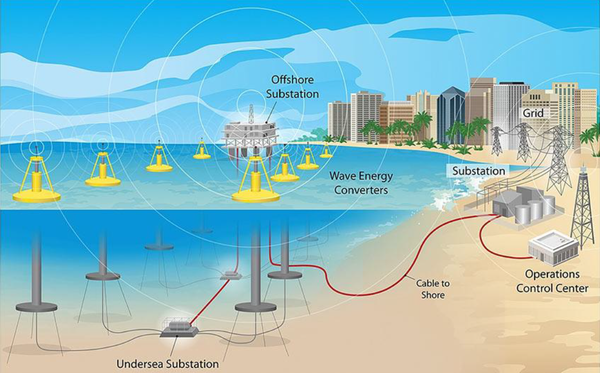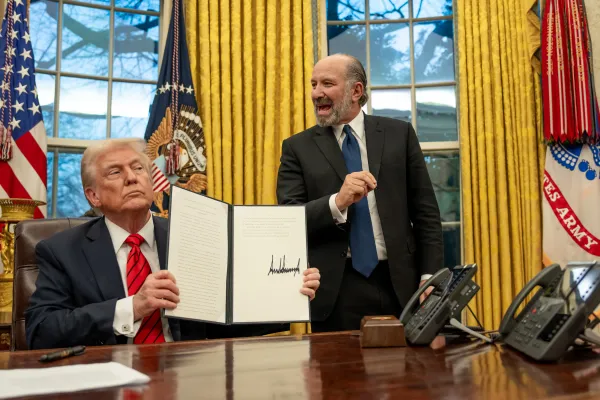What I’m reading: Trump kills the Green Proving Ground, uncertainty reigns on federal clean energy funding, and more

Quitting Carbon is a 100% subscriber-funded publication. To support my work, please consider becoming a paid subscriber or making a one-time donation.
Ahead of the long holiday weekend, here is another roundup of highlights from what I've been reading – and listening to. Enjoy!
Trump kills GSA’s Green Proving Ground: Why scrap a program that was delivering tens of millions of dollars in annual savings for taxpayers? The Trump administration recently did just that by killing the General Services Administration’s (GSA) Green Proving Ground program, reports Fast Company’s Nate Berg.
In partnership with the U.S. Department of Energy, the 15-year-old program had used GSA’s vast real estate portfolio (the GSA is the federal government’s landlord) as a real-world testbed for next-generation building technologies that save energy and reduce operating costs. “Previous GSA officials estimated that the technologies implemented through the Green Proving Ground program avoid 116,000 tons of CO2 emissions and save the government $28 million in energy costs annually,” writes Berg.
So, what’s not to like? Perhaps it was as simple as the “Green” in the program’s name getting flagged by Elon Musk’s DOGE team. The Green Proving Ground pages have been removed from the GSA’s website. In 2023, the Biden administration set aside $30 million from the Inflation Reduction Act (IRA) for the Green Proving Ground program, with a goal of “turning federal buildings into testbeds for clean energy innovation,” notes Berg.
Scrapping the program could cost U.S. jobs, too. “Getting a contract with GSA is one of the biggest things that could happen to a company, and that’s now stopped,” says Marshall Cox, CEO of the startup Kelvin.
On clean energy funding, uncertainty reigns: I thought voters returned Donald Trump to the White House because he was a businessman who would lower prices and turbocharge the economy. So, why is it that so much of what Trump has done over the past three weeks is anti-jobs and business?
Federal agencies continue to block clean energy and climate funding appropriated by Congress, in defiance of court orders. Pennsylvania Governor Josh Shapiro (D) filed a lawsuit yesterday alleging that the Trump administration is limiting his state’s access to more than $3.1 billion in funding for activities including distributed solar deployment, oil and gas well plugging, and home weatherization.
At the U.S. Department of Energy’s Loan Programs Office, John Sneed, the new leader of the office, told agency officials he will explore canceling existing financing deals, Bloomberg reported last week.
The moves left Sneed’s predecessor, Jigar Shah, incredulous.
“When Trump ran for president in 2016, he was like, ‘We need to keep plants here, we need to onshore and reshore.’ This is the fundamental concept of the whole ‘America First’ effort, right? And if as a consequence of his second term, America loses its mojo and decides to ship all manufacturing to China, that would be not what I would have expected,” Shah told Semafor’s Tim McDonnell.
He went on: “The [due diligence] costs of getting a loan through our office were about $6 million. Who will want to pay that, and then just hope and pray that Wright is still the Secretary? They’re playing with not just fire, but like red hot magma, because I don’t see how anyone can make a 20- or 30-year investment in the energy sector without the rule of law.”
Breach of contract: The primacy of the rule of law was highlighted in an essay this week by Heatmap’s Robinson Meyer on the role of contracts vis-à-vis the Trump administration’s refusal to unlock clean energy funding from the IRA and Bipartisan Infrastructure Law (BIL).
“The companies and local governments that are now being strung along by the Trump administration did not make a vague handshake agreement with the Biden administration. Instead, they signed a contract with the federal government to receive a certain amount of money in exchange for doing a certain activity,” he writes (emphasis in original).
“That is because – as long as the freeze continues – the Trump administration is going to start violating hundreds or even thousands of contracts and legally binding spending agreements. The Trump spending fight is not only about policy and the Constitution, in other words, but also about contract law.”
Tracking Biden’s billions in climate funding: So, where did the billions in clean energy and climate funding from the IRA and BIL, now at risk because of the Trump administration blockade, go? Yesterday, Grist’s Clayton Alder published a useful interactive online tool enabling readers to enter a ZIP code, city name, or other location in a search box to discover projects within any radius of a chosen area.
For example, within 50 miles of my home in Concord, California, nearly 850 projects worth $5.8 billion are at risk from the federal funding freeze. In the city of Concord itself, listed projects include three million-dollar upgrades at Buchanan Field Airport and a $1 million urban and community forestry grant from the U.S. Forest Service*.
Zero-emission construction in Oslo: Finally, some good news. Construction is a notoriously dirty business, with diesel-powered heavy machinery belching soot into the air. But it doesn’t have to be this way. In Oslo, Norway, the city government recently implemented a pioneering zero-emission construction policy, reports Nick Hedley at The Progress Playbook.
“As of January 2025, all contractors providing work to Oslo’s government have to use clean and quiet concrete trucks, excavators, and other machinery,” he writes. “In 2023, 77% of city-managed projects used zero-emission machinery, according to Oslo’s climate agency.”
“These pilot projects in motion across Oslo are building the evidence base that clean construction is viable, fair and safe for workers, and should be supported by city councils to propel the positive change necessary for a zero-emission future,” the C40 Cities initiative found in a report on Oslo's electrification pilots dating to 2019.
Bonus (what I’m listening to): The U.S. Agency for International Development (USAID) has dominated the news since Donald Trump was sworn in for his second term. Unfortunately, the attention is coming not because the Trump administration wanted to celebrate USAID’s critical public health and humanitarian mission but because it wanted to raze the agency to the ground.
So, why should you care? “Foreign aid” will never top Americans’ list of priorities. Most Americans wildly overestimate what we spend on assistance to other countries, believing the money would be better spent at home. But what if, instead of asking Americans whether they approve of nebulous “foreign aid,” you asked them: Do you support spending money on HIV vaccine trials in Africa? Or to eradicate polio globally? Or to maintain a global network to help countries detect viruses that could trigger the next pandemic?
Atul Gawande is one of my favorite writers. He is also a surgeon and public health researcher. And for the past four years – until January 20 of this year – he had served as the assistant administrator for global health at USAID. Last Friday, he joined the New Yorker “The Political Scene” podcast’s Washington Roundtable with Jane Mayer, Susan Glasser, and Evan Osnos (a must-listen for me every week) to talk about the vital work done by the agency he just left.
“You cannot pause a plane in midflight and expect that everything is going to be O.K. That’s what they were trying to do with life-saving health and humanitarian assistance around the world,” says Gawande. Do listen to the entire conversation.
*My wife Carlyn Obringer, the mayor of Concord, advocated for the urban forestry grant on behalf of the City of Concord in meetings with the city’s elected officials in Washington, D.C.




